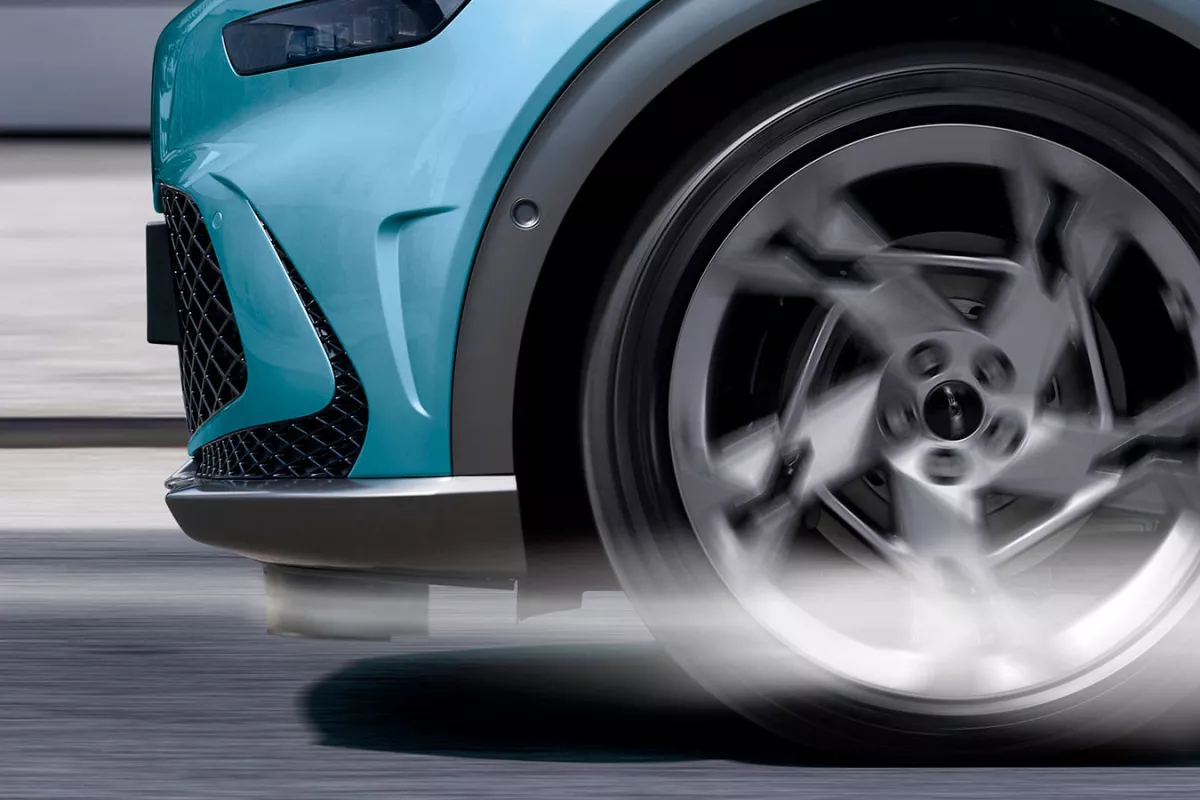Hyundai has developed a new active aerodynamics system for electric vehicles, in the form of "active air skirts" ahead of the front wheels that can increase downforce and stability, while reducing drag and improving highway range.
Sitting between the bumper and the front wheels, the AAS system looks pretty simple: a pair of specially-shaped aero pieces that deploy from the underbody when the vehicle hits 80 km/h (50 mph) to direct air around the front wheels. When the car slows below 70 km/h (43 mph), they retract back upward.
It's an EV-specific system; electric cars are at their most efficient in slow, stop-start traffic where they can recover plenty of energy in regenerative braking. On the highway, though, they struggle with the constant fight against drag – particularly in the higher-profile, higher-drag, highly popular e-SUV category.
The AAS system, as tested on Hyundai's GV60 e-SUV, reduced the car's drag coefficient by 0.008 – a 2.8% improvement according to the company. So how much further will that get you? Hyundai says the AAS system adds just 6 km (3.7 miles) to the car's range.

We assume that's across a regular range estimation driving profile, split between city and highway driving, and that if you plonked the GV60 on a highway and sat it at a constant speed, you'd get an improvement closer to 2.8% of the car's range – somewhere around 13 km (8.1 miles). Probably not the most exciting figure – unless you're running the thing close to the bone, in which case it all adds up.
Thanks to a rubberized lower section, Hyundai says the system will work up to and over 200 km/h (124 mph), and will contribute to additional downforce, traction and stability to boot.
The system is going into durability and performance testing, where Hyundai/Kia will assess whether it starts going into production cars, and indeed which ones.
Source: Hyundai/Kia






